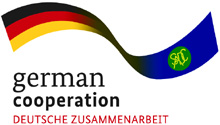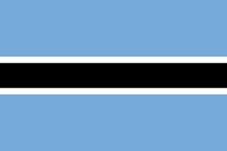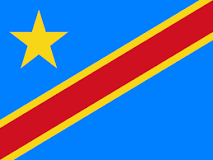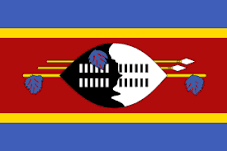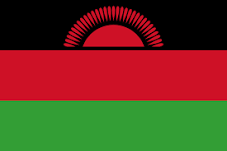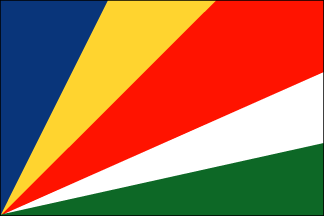CCARDESA & ASARECA Explore Use of Earth Observation Technologies to Address Effects of Climate Change

Farmers worldwide have been tirelessly seeking means and ways of increasing their yields. One of the ways that farmers have resorted to is the use of satellite technology. This technology was introduced to improve, track and plan advanced farming practices. These technologies allow quicker and more efficient farming. The most common satellite technology is earth observation which helps farmers remotely monitor their crops. Today's agriculture routinely uses sophisticated technologies such as drones, robots, temperature and moisture sensors, aerial images, and GPS technology. These advanced devices, precision agriculture, and robotic systems allow businesses to be more profitable, efficient, safer, and environmentally friendly.
To raise awareness of the importance of earth observation technologies, the Centre for Coordination of Agricultural Research and Development in Southern Africa (CCARDESA) and the Association for Strengthening Agricultural Research in Eastern and Central Africa (ASARECA) co-hosted a Stakeholders validation of a regional report on satellite data user mapping and a kick-off meeting for “Information for Agriculture and Food Security” Project at Grand Aria Hotel in Gaborone, Botswana from the 8-9th November 2022. ASARECA and CCARDESA are part of the CAADP-XP4 consortium. The CAADP-XP4 Programme is funded by the European Union (EU) and administered by the IFAD. It is implemented in collaboration with the African Forum for Agricultural Advisory Services (AFAAS), the Association for Strengthening Agricultural Research in East and Central Africa (ASARECA), the West and Central African Council for Agricultural Research and Development (CORAF), the Centre for Coordination of Agricultural Research and Development in Southern Africa (CCARDESA) and Forum for Agricultural Research in Africa (FARA).
The main objective of the meeting was to support consultations with relevant African agricultural agencies to identify priority information services from the Digital Earth Africa platform to support Africa’s agricultural sector and create a strategy to develop and deliver these services. The two organisations further wanted to identify who among its stakeholders is involved in the use of earth observation data, information, and products (GIS mapping and remote sensing, weather forecasting, land or soil suitability mapping, crop phenology modelling, water and vegetation cover monitoring, monitoring, or predicting pest or disease outbreaks besides other products and services). The meeting also wanted to highlight the role of Earth observation data, products and services in addressing challenges associated with Food Security. And finally, the meeting wanted to raise awareness about the Digital Earth Project that houses Africa’s earth observation data.
Digital Earth Africa was established through support from the US-based Leona M. and Harry B. Helmsley Charitable Trust and the Australian Government. It provides the technical and operational expertise from Digital Earth Australia (DE Australia) to build the existing capacity for Earth Observation across Africa. It works with partner institutions to maximise the potential impact of the program.
The meeting was officially opened by the CCARDESA Executive Director, Dr Cliff Dlamini, who, in his remarks, indicated that he was happy to see CCARDESA and ASARECA jointly host the meeting aimed at supporting farmers’ use of earth observation data and products to address the effects of climate change. He added that CCARDESA AND ASARECA are also involved in implementing an Australian Government-supported Initiative on information for agriculture and food security with a strong focus on using Earth Observation data and products.
Dr Dlamini explained that Earth Observation (EO) involves gathering information about the planet’s physical, chemical, and biological systems via remote-sensing technologies. This information can be used to monitor and assess the status of, and changes in, the natural and artificial environment. He noted that despite the exponential growth in earth observation data and its applications, developing countries, particularly in Africa, are lagging behind in harnessing the breadth and complexity of EO data for decision-making on sustainable development issues.
He reminded the participants of how CCARDESA commissioned a study to map the users and providers of Earth Observation data. He highlighted the importance of having a diverse spectrum of stakeholders to validate the study, which will enhance the credibility of the study results. Dr Dlamini also indicated that the meeting couldn’t have come at a better time when earth observation is increasingly being identified as an essential enabler in addressing food insecurity in Africa and the world.
Mr Moses Odeke, the ASARECA Acting Programmes Director, thanked all stakeholders for attending the meeting. He mentioned the critical role of earth observation data in mitigating the effects of climate change and increasing agricultural yields. He said if farmers could use more earth observation data, they would cut down on costs and will monitor the crops to avoid losses. He mentioned how ASARECA has been working with Digital Earth Africa to ensure that farmers are supported to have access to the earth observation data.
Dr David Farrow, the Consultant who undertook the study, shared that the CCARDESA satellite study identified a few challenges from respondents and why they do not use satellite data. Critical among the challenges was the need for more awareness about the tools, the need for more improved access to high-resolution imagery to make useful interpretations for work involving smaller parcels of land typical of smallholder holdings in the region, and limited awareness of available tools to use. The study also noted that downloading data sets was limited by the low internet speeds or bandwidth, making accessing the data almost impossible and expensive. Inadequate infrastructure to store Earth Observation Data and lack of a network of Earth Observation has also been cited as other critical challenges that need to be addressed. The study successfully mapped Earth Observation users who needed to be aware of Digital Earth Africa.
Mr Dwayne Elderkin, a Director at Precision Arial Agritek, shared how his company uses drone solutions to support farmers with farm layouts and crop protection drones, including spraying fertilisers and pesticides and multi-purpose monitoring crops in Botswana. Mr Elderkin stated that through the use of drones’ farmers have noted an increase in production, a decrease in product use, and about 80 to 90% of water preservation. He further added that drone technology is environmentally sustainable. “The drone technology helps to do targeted crop spraying instead of the entire field when only a little section of the farm needs spraying. Mr Elderkin also mentioned that drones could be used to transport and deliver goods.
To close the meeting, the CAADP-XP4 Coordinator Dr Baitsi Podisi who spoke on behalf of the Executive Director, thanked the various specialists and farmers for taking time off their busy schedules for the meeting. He also thanked Digital Earth Africa, ASARECA, the European Union (EU) and IFAD for funding the meeting and the CAADP-XP4 Programme.
Dr Podisi said that in the next steps, CCARDESA and ASARECA would organise dive-deep engagement with a limited cross-section of stakeholders into the challenges, develop a network of EO users, and organise training to strengthen member states in earth observation technologies. They will also work towards co-developing consumable products, including strengthening partnerships and bringing more stakeholders on board with these technologies in Africa.
The meeting developed a stakeholder engagement plan that will be followed up with further capacity-strengthening activities of selected member states. The meeting was attended by participants drawn from NGOs and Farmer organisations and experts and users from National Agricultural Research Institutes, the Ministry of Agriculture, the Ministry of water, natural resources and environment (wildlife, forestry), Universities and the Private sector from twelve countries (i.e., Botswana, Eswatini, Ethiopia, Kenya, Mozambique, Namibia, Rwanda, Uganda, South Africa, Tanzania, Zambia, and Zimbabwe.










